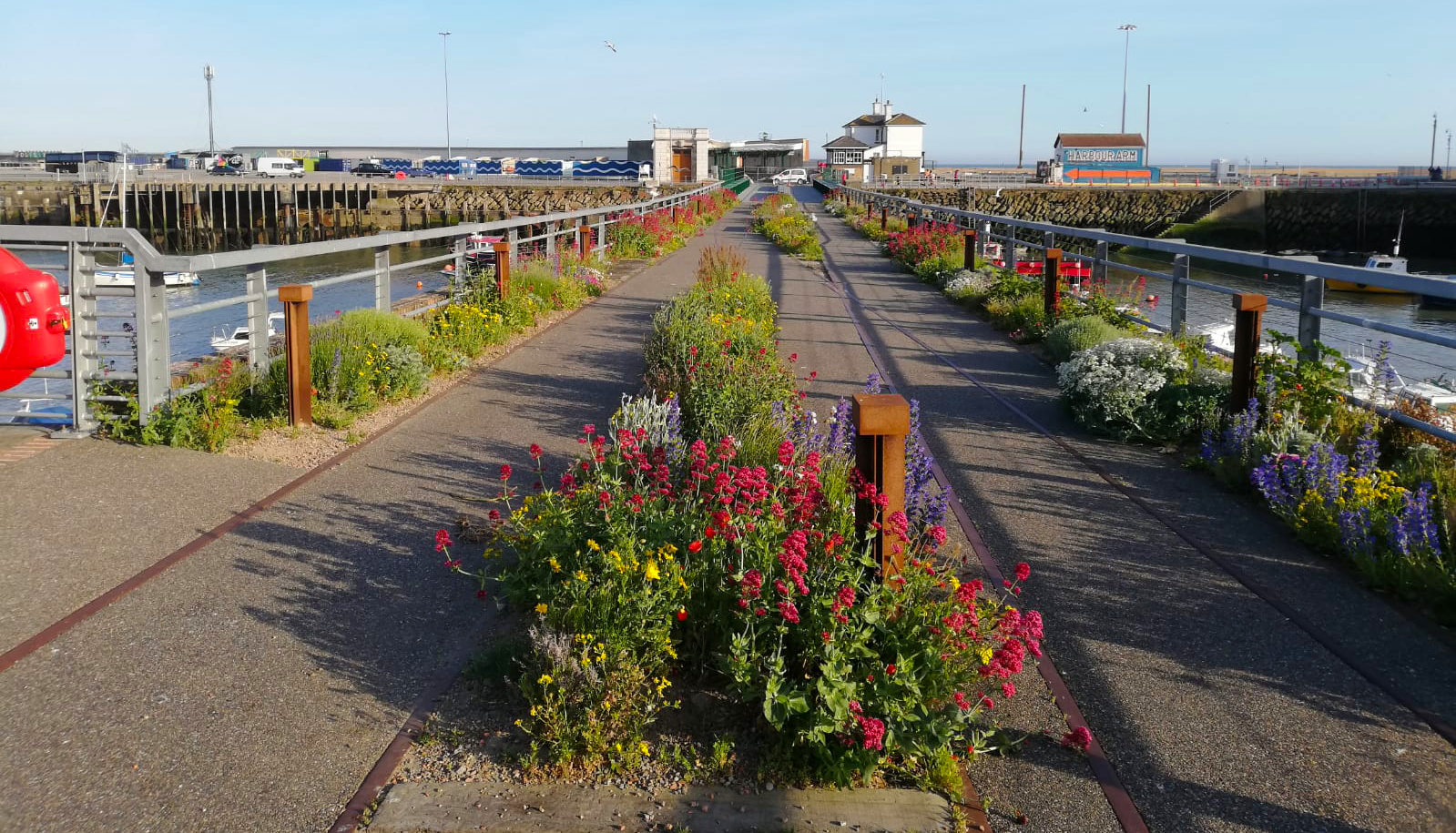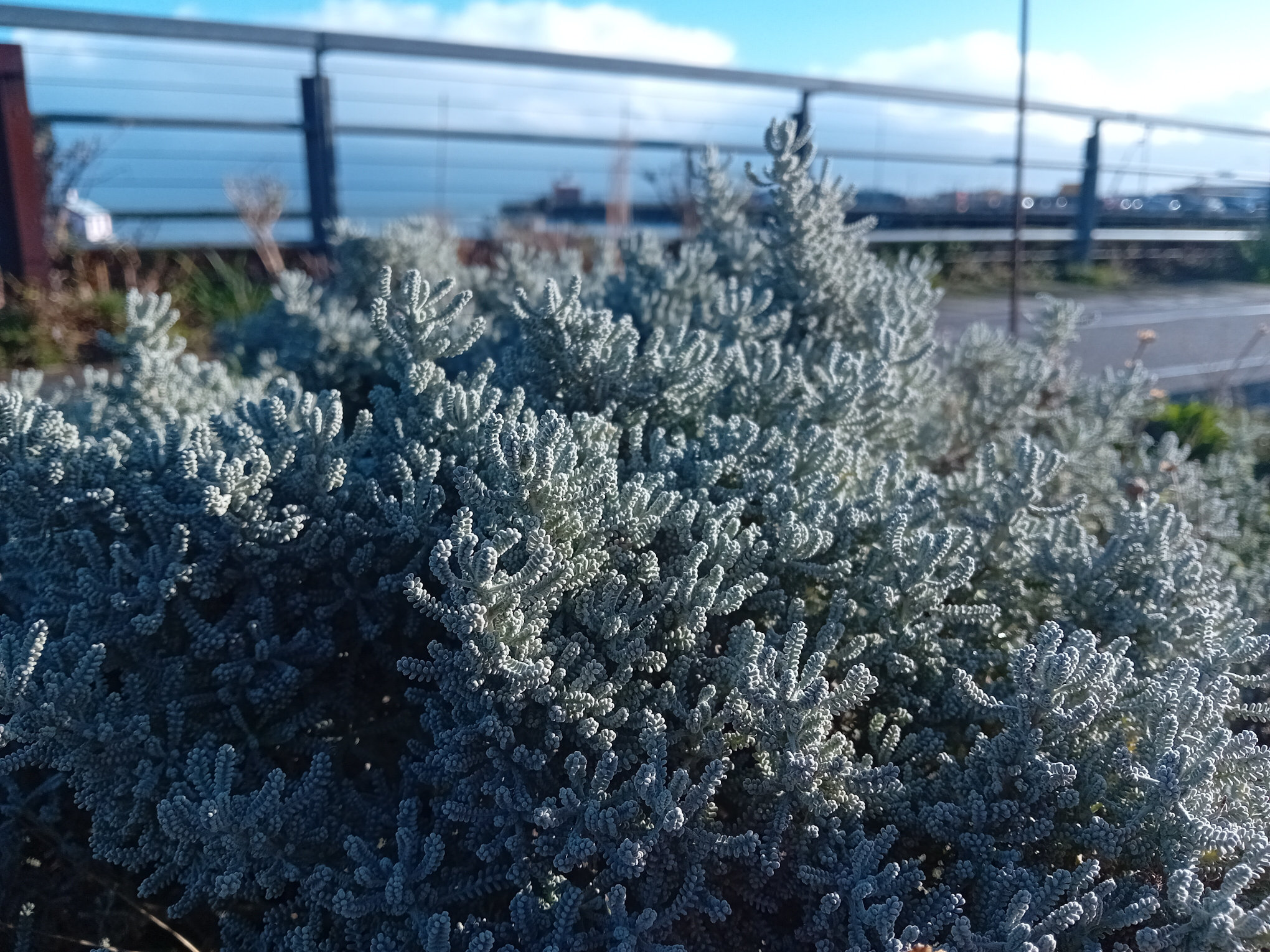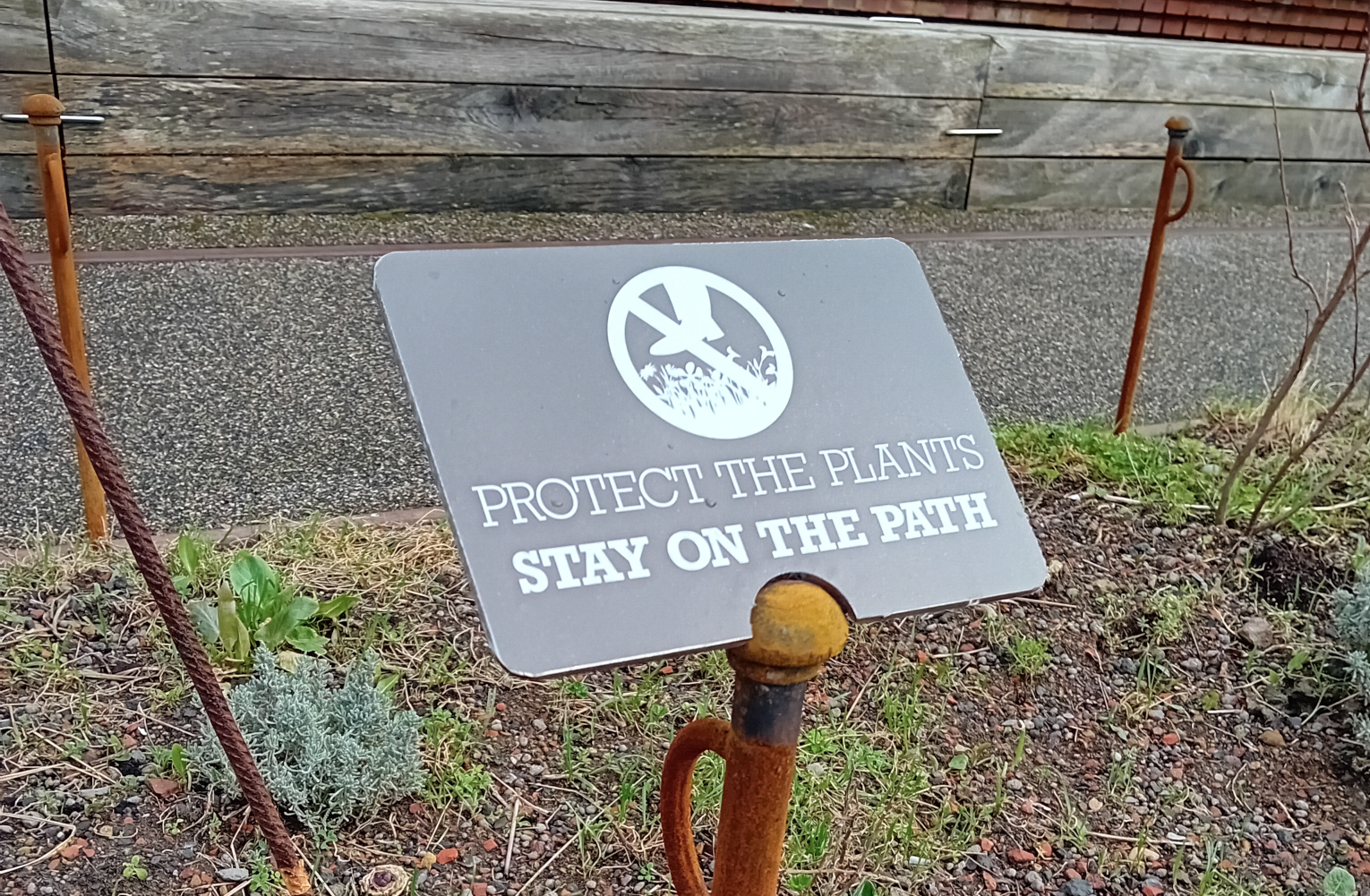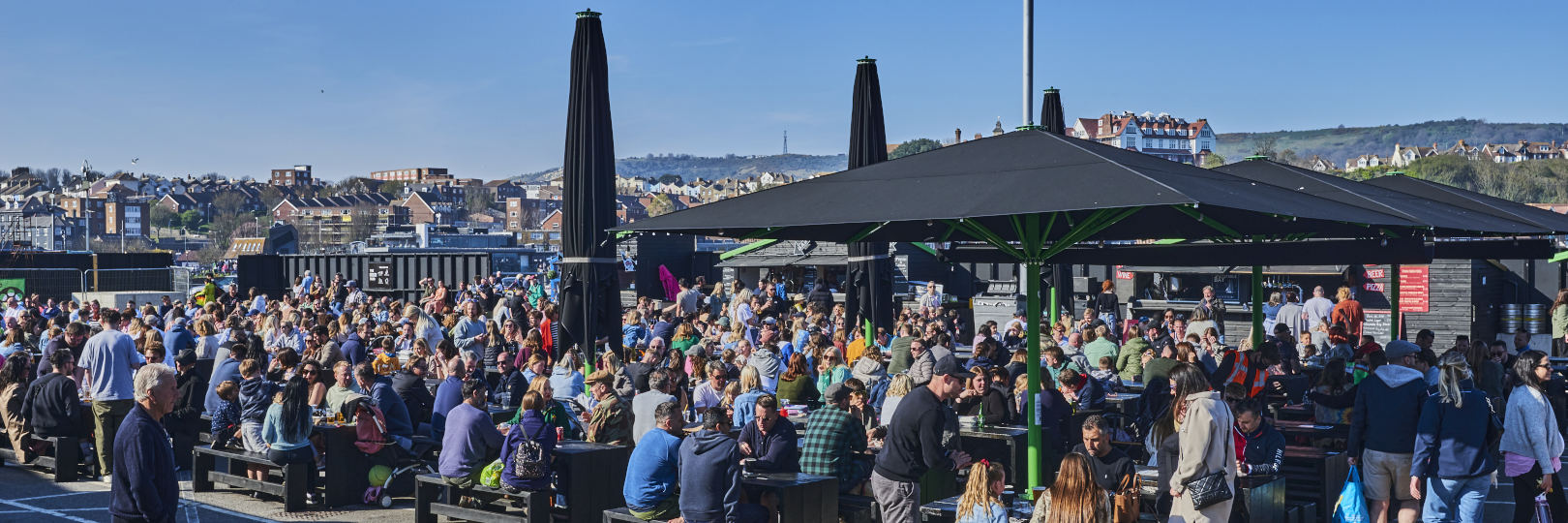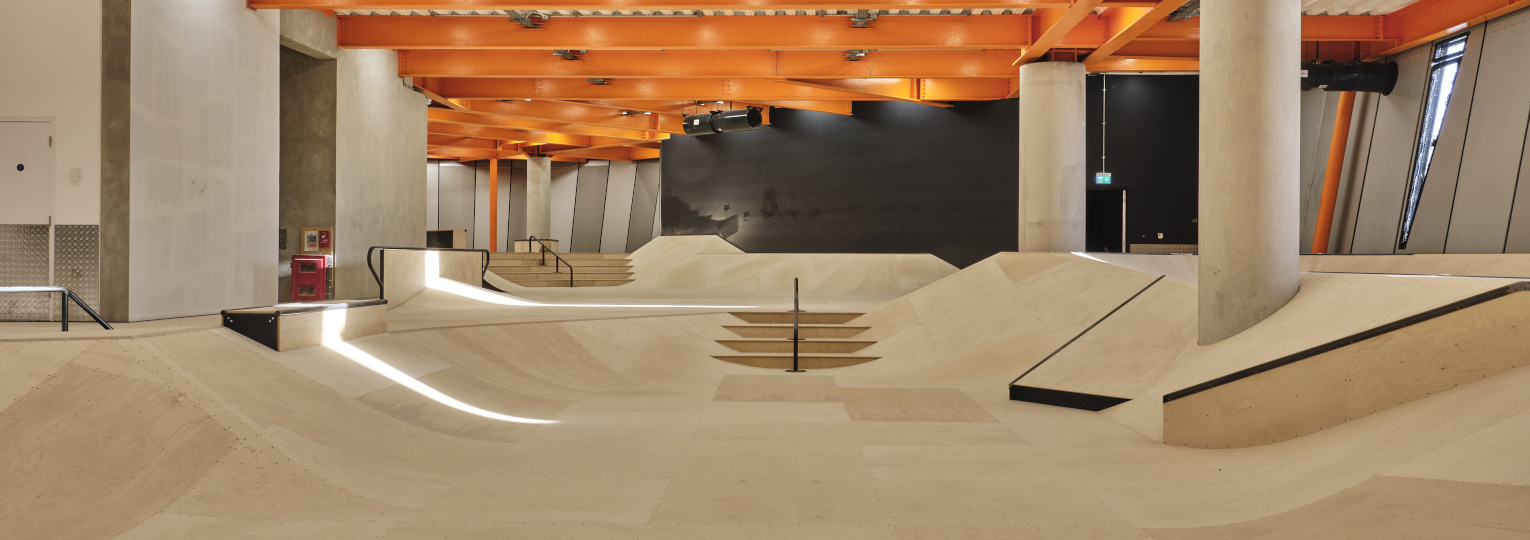Live
Decorative planting around folkestone harbour
If you compare photos of Folkestone Harbour from 10 years ago to today, you will agree that a lot of work has been done. The derelict harbour station was full of rust, broken windows and dilapidated pathways and walls. Now, not only has the infrastructure of the station, platform, harbour arm and viaduct been renovated, but repainting and planting has also helped beautify the area. There’s new signage to help guide you to the walk ways and admire the planting.
Plants that live by the sea have to put up with a lot of seawater spray and mist in the air. Sometimes it can be windy, and at other times blazing sun and little water. To survive in these conditions you need certain traits. Here’s a guide to some of the plants you can find around Folkestone Harbour.
common mallow (Malva Sylvestris)
The deep pink flowers with distinctive stripes appear on the common mallow from June to October. It attracts insects with its funnel flowers which is important for maintaining the natural biodiversity around the site. Not only do we want to make the surroundings look good, but we want to ensure that local flora and fauna can thrive. Some might think of this plant as a weed, but remember, weeds are only plants growing in a place you don’t want them to be!
The leaves and flowers of this plant are edible and have been used in salads and herbal teas. It’s wise to pick from areas where you know the plants are clean and pesticide free. Whilst we don’t spray our plants, the routes you will find them on are very popular with dog walkers. We will leave the rest of that thought to you.
Western Gorse (Ulex gallii ‘mizen head’)
This evergreen hardy gorse spreads vertically rather than gaining much height. It has bright yellow flowers that last into the mild moments of winter which adds colour to a waning bed. The spiny branches deter wandering through the flower beds which is helpful in the restoration of the Harbour area. The flowers are attractive to bees in search of nectar which in turn helps pollinate the plant. Once the flowers have been pollinated they will sag and become less attractive as the seed pod forms beneath the yellow petals. If you have a quiet moment in late summer you might be able to hear the pods ‘pop’ and distribute the seeds around the area. Other helpful insects move the seeds along to new homes.
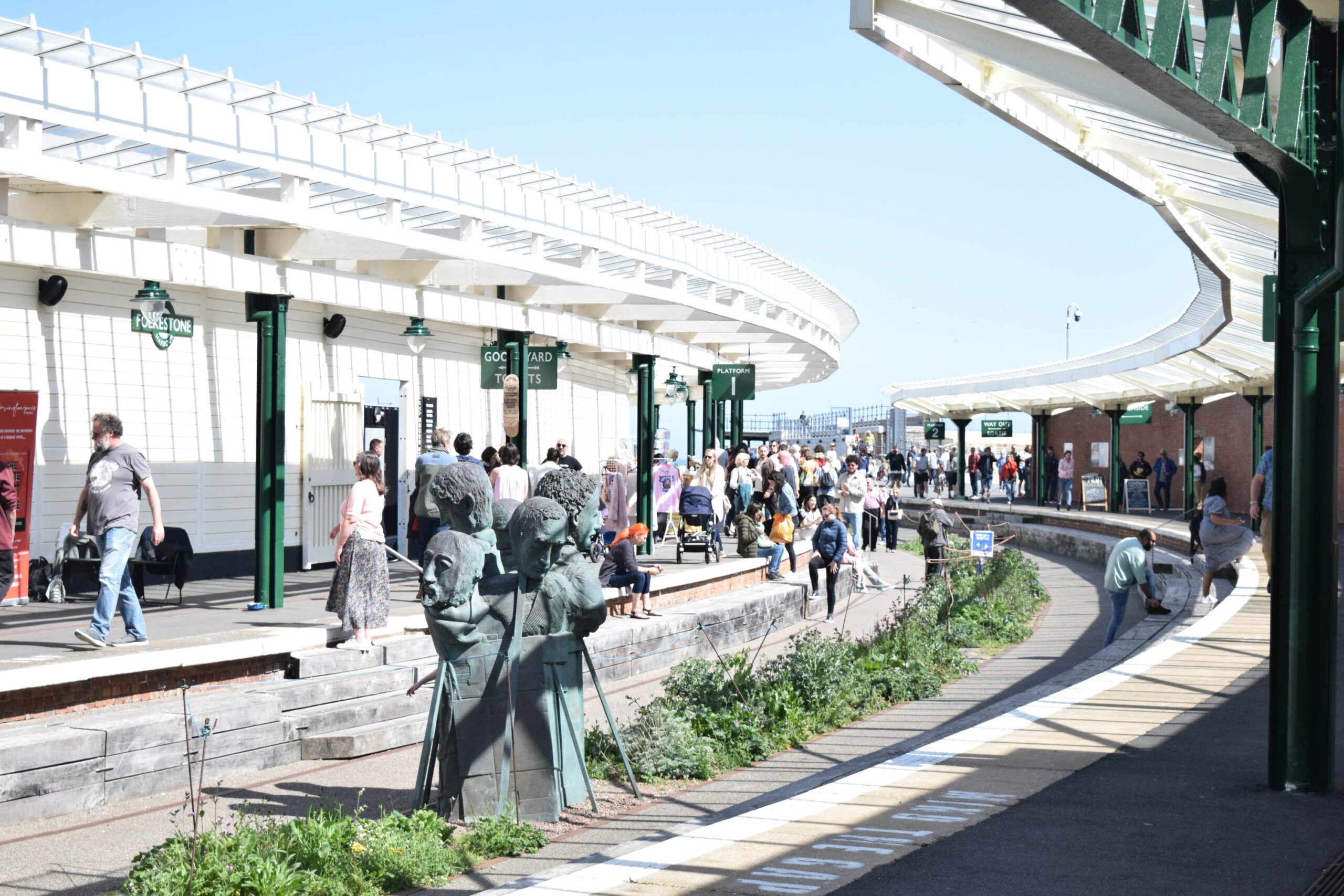
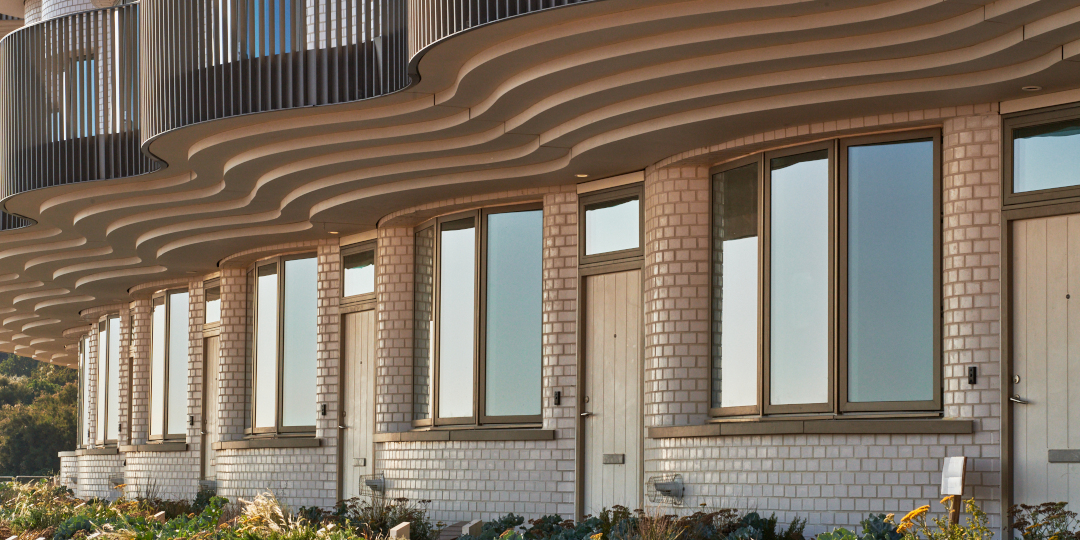
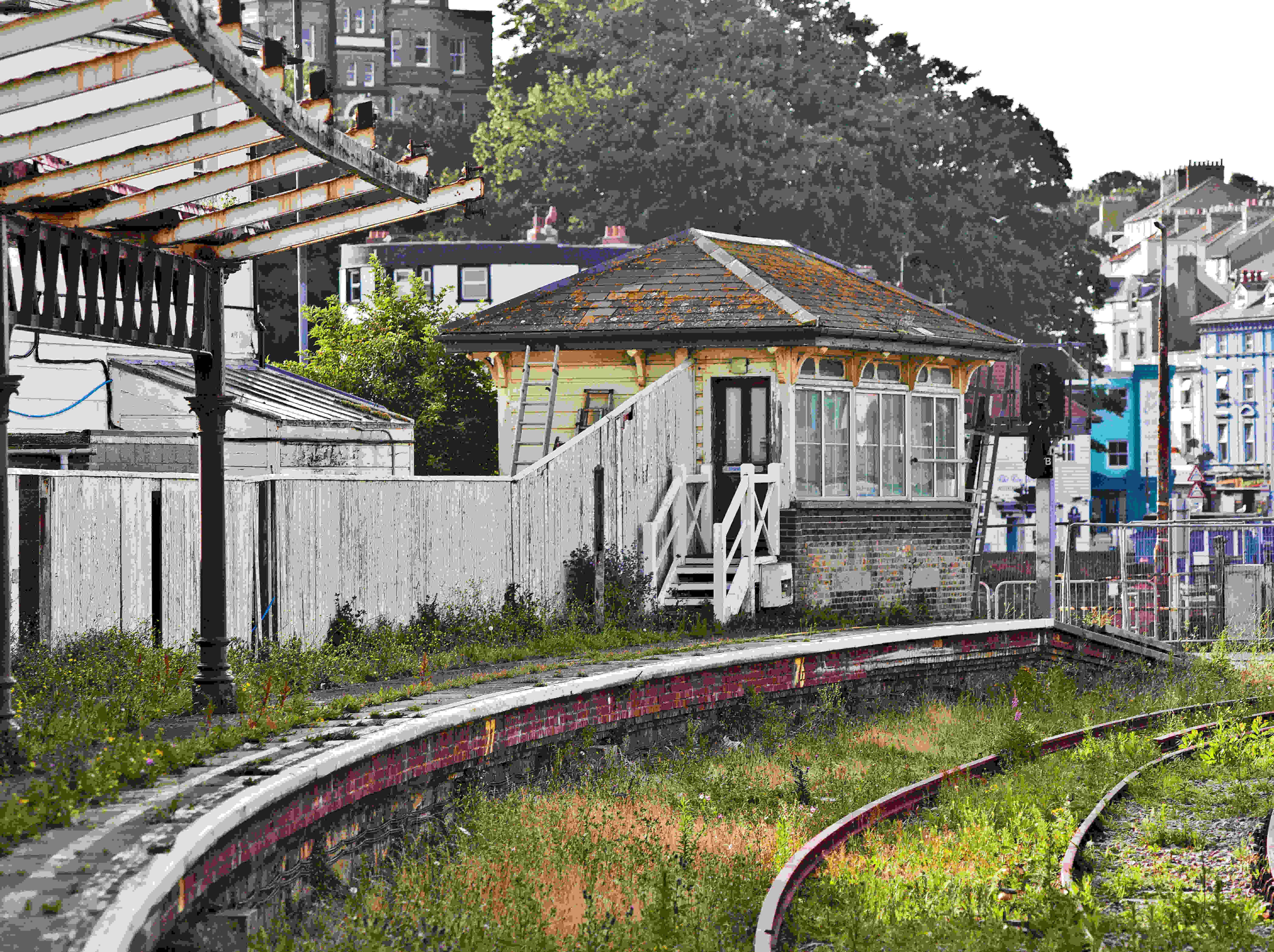
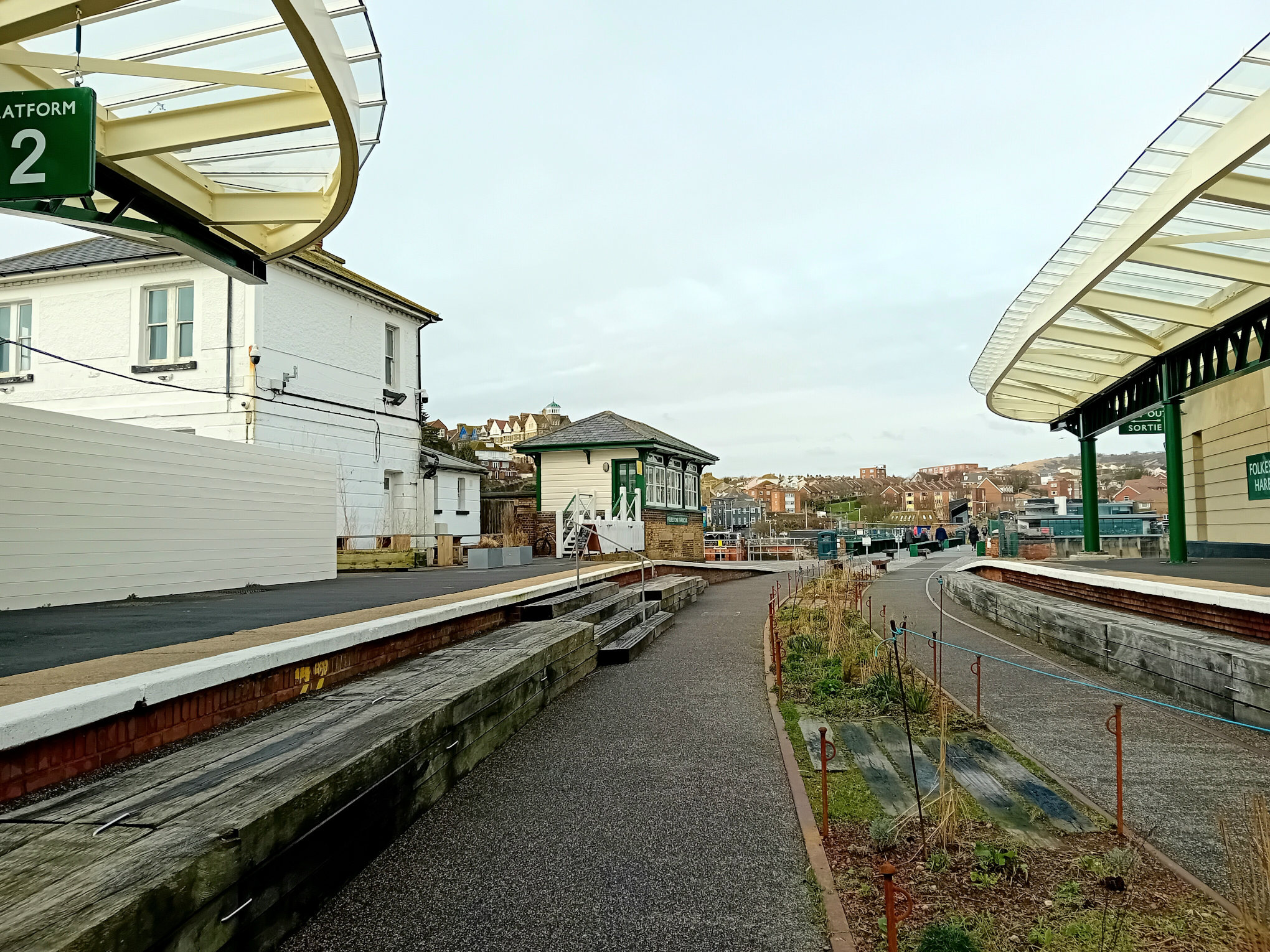
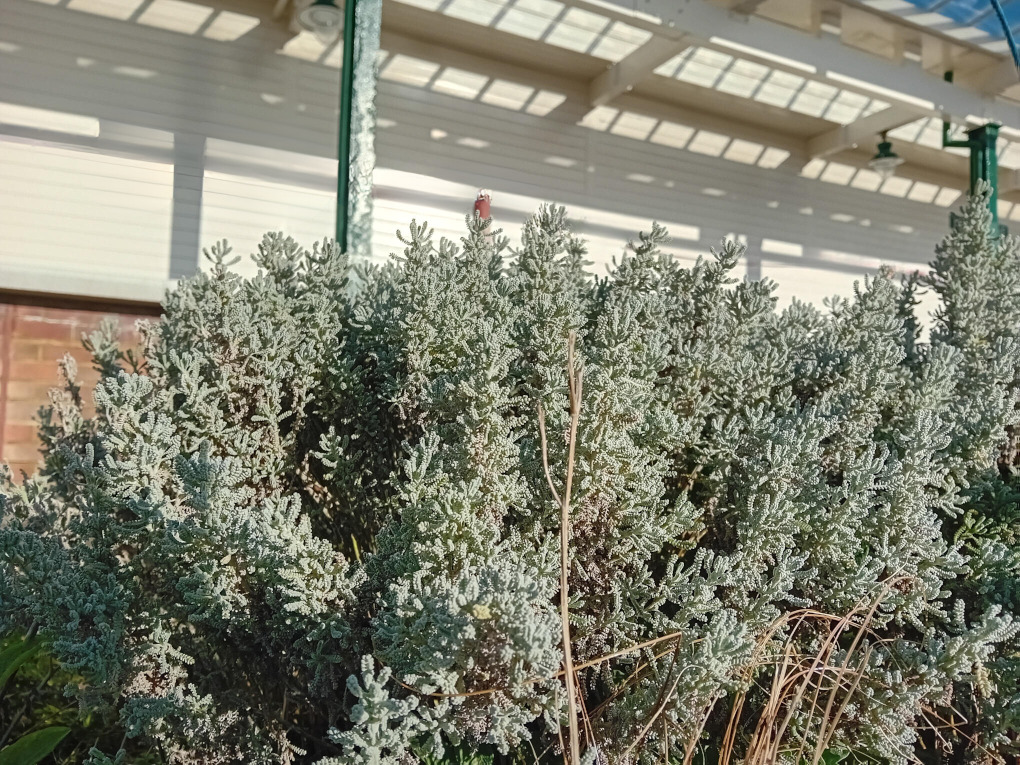
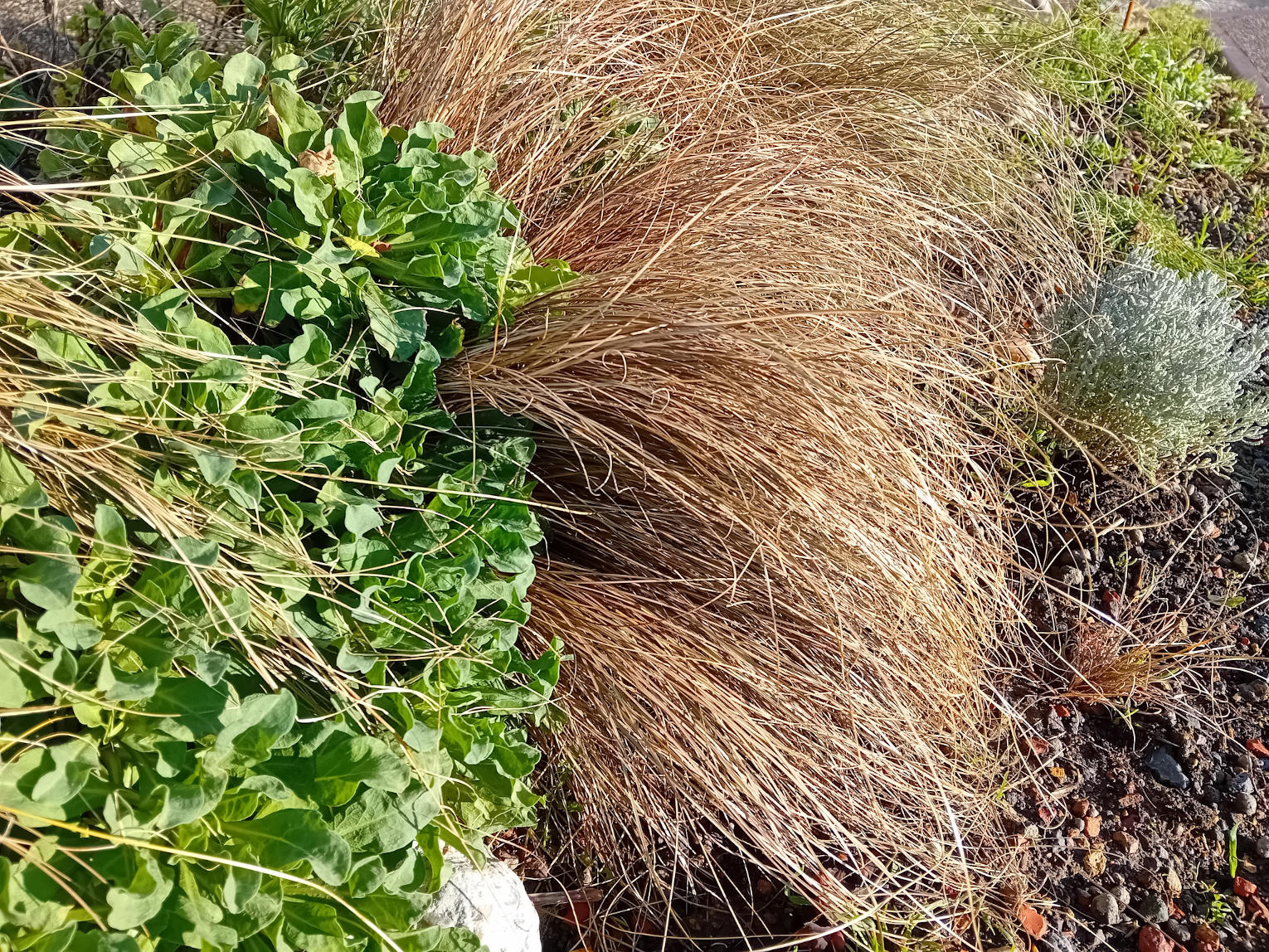
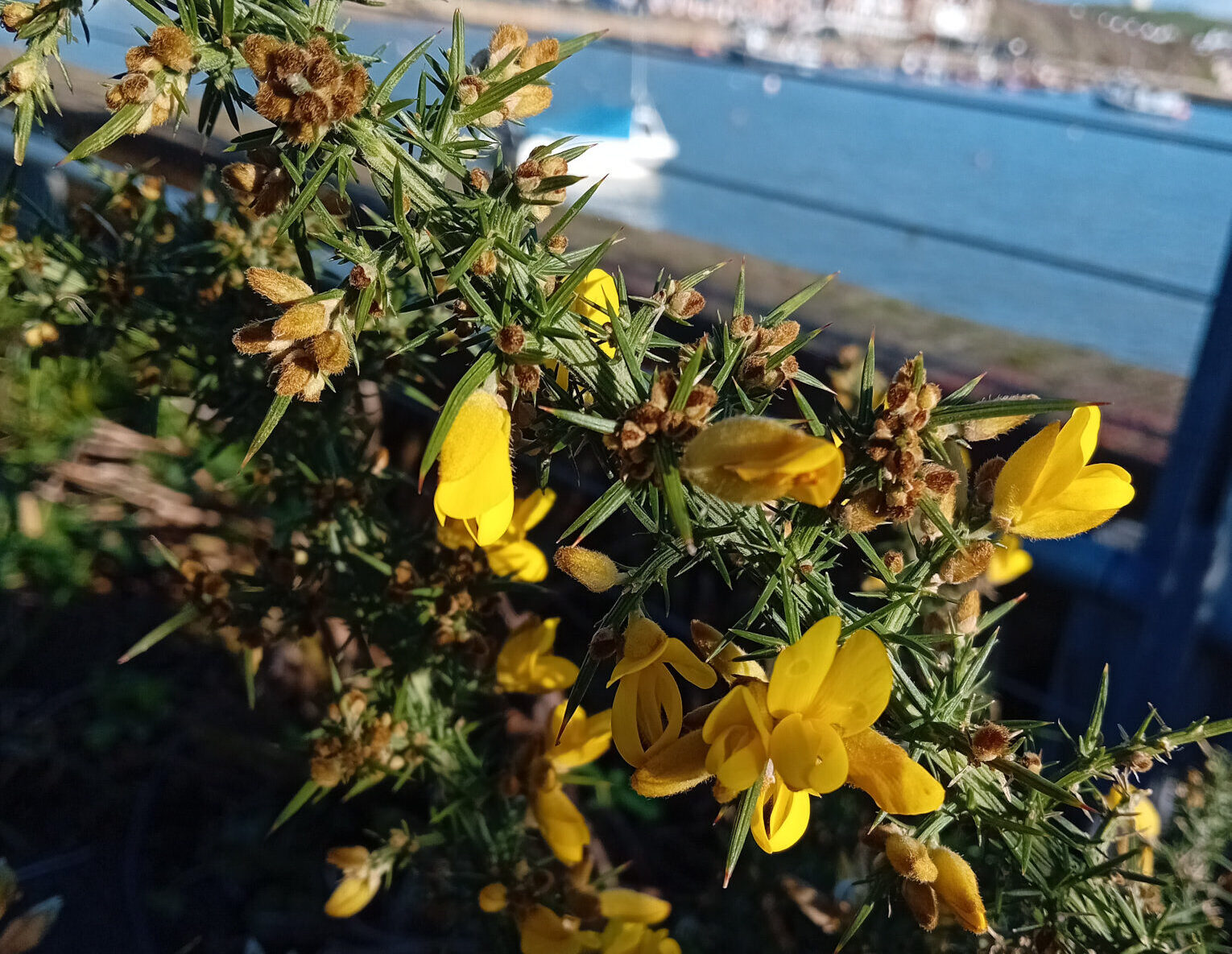
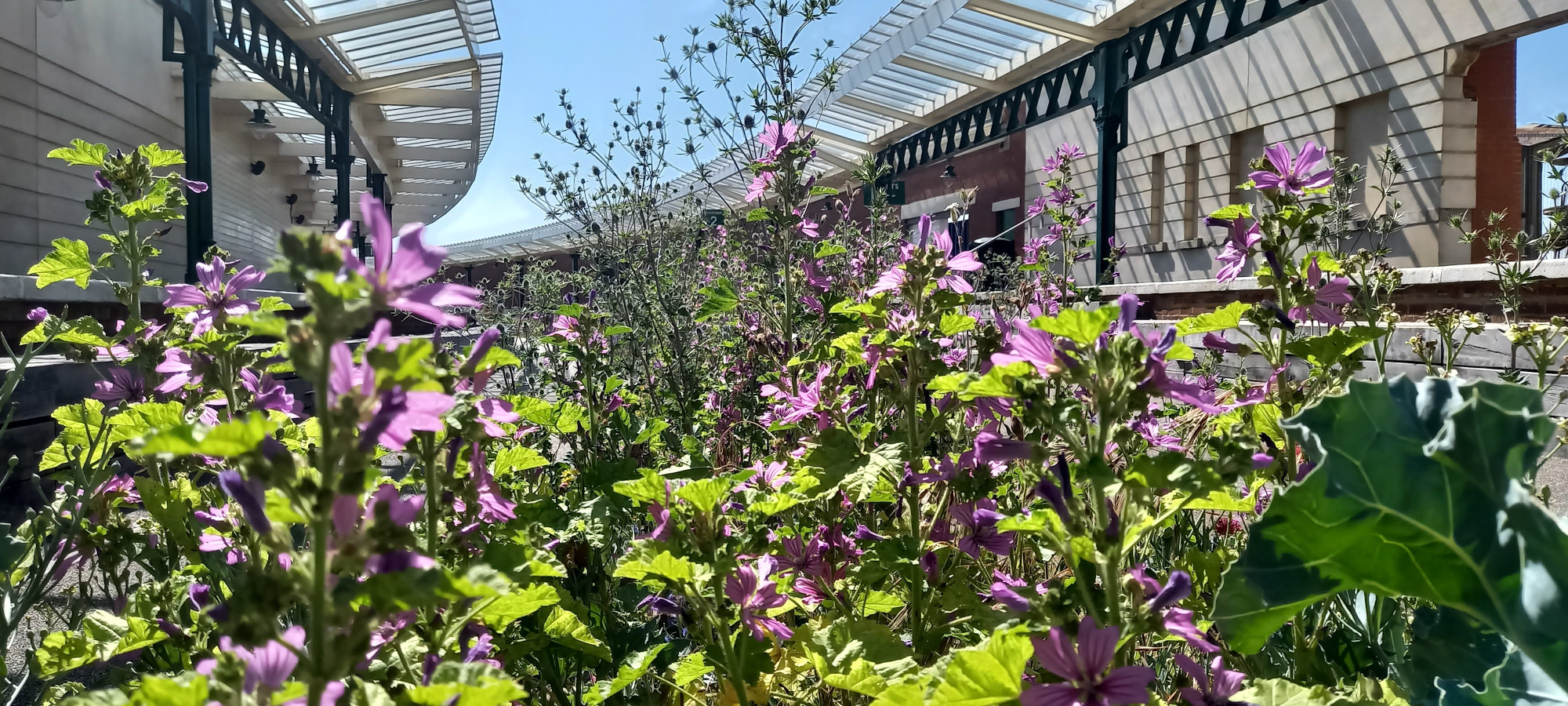
cotton lavender (Santolina chamaecyparissus)
Cotton Lavender has no relation to either the cotton plant or lavender! Its leaves give off an aromatic scent when bruised. This plant is native to the Mediterranean which adds that certain feel to the Harbour Seafront. It’s also an indication of the climate being warm enough to support this plant throughout the winter on the South Coast. Cotton lavender likes a well-drained soil, as do all of these plants you’ll find around the site. The soil is quite poor too due to the nature of the terrain and these hardy plants enjoy living here. You will find the cotton lavender in the shadier areas such as through Folkestone Harbour Station. During the summer months there are delicate yellow flowers to be seen.
viper’s bugloss (Echium vulgare)
This wonderful native plant to southern coastal UK’s stem resembles a viper’s body. It has blue flowers from May to September but it’s the hairy, spotted stems that give it its name. Again this provides food for many insects including red and buff-tailed bumble bees. You will see many different butterflies and honey bees around these plants across the summer months too. The word ‘bugloss’ comes from the Greek for ox’s tongue. If you stroke the leaves you’ll find them rough, apparently like an ox’s tongue.
Switchgrass (Panicum vigatum)
Switchgrass is an important plant to grow not only for improving the soil condition but also for providing a habitat for local wildlife. It is dormant through the colder months and needs some warmth to reinvigorate it after that hibernation. Switchgrass is found in sunny spots with moist soil and is used as a biofuel in farming. It’s connection to the soil is to prevent soil erosion and the plant is tolerant of salty conditions which suits living by the sea. The leaves have a blueish tinge during the summer, turning yellow/orange in autumn and falling back in the winter. Once the flowers have turned to seed they make good winter food for foraging birds.
As the weather improves, and the plants become established, it will be clear to see what can be enjoyed throughout the year.
